Parc Santokki (산토끼 노래동산)
0m 0 2023-06-28
623, Ibang-ro, Ibang-myeon, Changnyeong-gun, Gyeongsangnam-do
Le parc Santokki désigne un espace de villégiature situé derrière l'école primaire de Ibang dans l'arrondissement de Changnyeong-gun.
Ce parc a été inspiré par la chanson pour enfants "Santokki", terme signifiant la montagne des lapins, une chanson composée par l'auteur Lee Il-lae. Le parc propose une variété d'activités en lien avec les lapins. On trouve aussi des espaces consacrés à l'auteur Lee Il-lae.
Marais d'Upo à Changnyeong (창녕 우포늪)
3.9 Km 17119 2023-04-26
220, Uponeup-gil, Yueo-myeon, Changnyeong-gun, Gyeongsangnam-do
+82-55-530-1521
Il y a quatre marais près des régions Yibang-myeon, Daehap-myeon et Daeji-myeon à Changnyeong-gun, appelés collectivement ‘Marais Uponeup’. Ce sont les plus grands marais naturels de Corée, d'une superficie totale d'environ 5,550 mètres carrés. Ces marais font moins d'un mètre de profondeur et plus de 1,000 espèces vivent dans leurs eaux troubles. Une centaine de types de plantes y vivent dont 28 types de plantes aquatiques et 72 types de plantes hydrophytes.
Les marais Uponeup ont été formés il y a environ 140 million d'années. Lorsque le sol mou s'effondra, l'eau commença à former un bassin qui devint éventuellement un lac où vivaient les dinosaures il y a de cela 100 millions d'années. Les marais Uponeup furent formés par les sédiments des montagnes apportés par les rivières.
Parc écologique 'Upo Wetland Cyber' (우포늪생태관)
4.8 Km 2160 2022-09-21
220, Uponeup-gil, Yueo-myeon, Changnyeong-gun, Gyeongsangnam-do
+82-55-530-1551
Le parc écologique 'Upo Wetland Cyber' recueille des données et effectue des recherches sur divers animaux sauvages des zones humides (oiseaux, poissons, mammifères, amphibiens et reptiles) et informe de ces recherches au grand public. Le parc écologique 'Upo Wetland Cyber' sensibilise les visiteurs sur la façon dont nous pouvons vivre en harmonie avec la nature.
Terminal des bus interurbains de Changnyeong
10.3 Km 3211 2015-11-24
1073-1 Gyo-ri Changnyeong-eup Changnyeong-gun Gyeongsangnam-do
Maison de la famille Gwak (현풍곽씨십이정려각)
10.7 Km 3348 2020-04-14
3, Jidong-gil, Dalseong-gun, Daegu
+82-53-668-3162
Désigné comme biens culturels n° 29 de Daegu le 12 mai 1995, ce sanctuaire a été construit dans la période de la mi-Joseon, sous le règne du roi Yeongjo. Le sanctuaire détient 12 Jeongnyeo (portes monumentales) attribuées aux membres de la famille Gwak, construits à partir de l'époque du roi Seonjo en 1598 à l'époque du roi Yeongjo.
C'est un sanctuaire important et unique parce que la famille Gwak a atteint leur 12 Jeongnyeo dans un seul village, ce qui est assez rare.
Au cours de la dynastie Joseon, Jeongnyeo ont été décernés pour honorer les fils dévoués et les maris ou femmes exemplaires.
Anciennes tombes à Changnyeong (창녕 교동과 송현동 고분군)
11.2 Km 23058 2023-06-28
34, Changmil-ro, Changnyeong-eup, Changnyeong-gun, Gyeongsangnam-do
Les anciennes tombes de Songhyeon-dong, situées autour de la forteresse Mokmasanseong à l'ouest du mont Hwawangsan, désignent de grandes anciennes tombes sur la route menant à Hyeonpung.
Le site comprend une douzaine d'anciennes tombes réunies autour d'une tombe royale. Il ne reste aujourd'hui que 8 tombes. La plupart des reliques en lien avec ce site ont été déplacées au Japon au début du 20ème siècle.
Centre national scientifique de Daegu (국립대구과학관)
14.0 Km 2140 2023-01-05
20, Techno-daero 6-gil, Dalseong-gun, Daegu
+82-53-670-6114
Au Centre des sciences de Daegu, les enfants peuvent découvrir le monde des sciences tout en participant à des activités pratiques.
Seokjeongdaek House [Korea Quality] / 개실마을영농조합법인 석정댁 [한국관광 품질인증]
16.9 Km 5989 2020-09-09
6, Gaesil 2-gil, Ssangnim-myeon, Goryeong-gun, Gyeongsangbuk-do
+82-54-956-4022 / +82-10-3207-4022
The Seokjeongdaek House in the village of Gaesil is rented out in its entirety to allow guests to enjoy their stay completely undisturbed. Upon entering the large gate situated between the low walls, guests will discover a spacious courtyard and a fine wooden hanok. This large hanok consists of two rooms, a living room and a kitchen, and can accommodate 8 to 10 people. Each room is equipped with various amenities including TV, fridge, Internet, and air-conditioning. Guests can cook using the cooking equipment in the kitchen and hold a BBQ party in the courtyard. Known as the village of the Seonsan Kim clan, Gaesil Village was founded by the descendants of Kim Jong-jik (pen-name: Jeompiljae, 1431-1492), a leading Korean Neo-Confucian scholar of the early Joseon period who died during the Literati Purge of 1498. The head house of Kim Jong-jik (Provincial Folk Material No. 62) and Doyeonjae (Provincial Cultural Heritage Material No. 111), the old village school, are also situated in the village. In addition, the nearby Daegaya Museum displays the writing accessories of Kim Jong-jik (Provincial Tangible Cultural Heritage No. 209). The village is also known as Gaehwasil, meaning “a beautiful valley with blooming flowers” as it is surrounded by a flower-covered mountain called Mt. Hwagaesan, a 350-year-old bamboo forest, and Jeopmubong Peak, which is said to resemble a fluttering butterfly. Over 80% of the village houses are traditional hanok buildings nestled amid a cozy environment. During the Campaign to Create Beautiful Communities conducted in 2001 and the Farm Experience Village Development Project in 2005, the village’s hanok were renovated or entirely rebuilt, earthen-stone walls were built, walking paths created, and refined landscaping works carried out, establishing the village in its current form. Furthermore, a village shelter, experience center, Internet café, and other facilities were built for the convenience of residents and visitors alike. In recognition of the villager’ efforts to revitalize their community, Gaesil was awarded the presidential citation at the Korea Rural Village Awards in 2011. Designated as a NongHyup’s Farm Stay Village in 2003, Gaesil operates a wide variety of hands-on experience programs relating to nature, agriculture, and local traditions, such as collecting sweet potatoes and rice planting; Korean traditional etiquette and tea ceremony; kite making and straw handicrafts; traditional food experiences such as yeot (Korean hard taffy) and yugwa (deep-fried sweet rice cakes); traditional games such as riding on a swing and neolttwigi (Korean see-saw); as well as loach fishing, ice sledding and so on. Gaesil Village, a representative farm stay village that “blooms” in every season, attracts around 50-60,000 visitors every year.
Ungidaek House [Korea Quality] / 개실마을영농조합법인(웅기댁) [한국관광 품질인증]
17.0 Km 5951 2020-09-09
32, Gaesil 1-gil, Ssangnim-myeon, Goryeong-gun, Gyeongsangbuk-do
+82-54-956-4022 / +82-10-3207-4022
Ungidaek House of the Gaesil Village Farming Association Corporation is distinctive for its red clay exterior. This cozy hanok comprises two rooms: Juksil, which accommodates 6 people, and Maesil, which is suitable for 4 people. Each room is decorated with white wallpaper and a red clay floor sheet, and is equipped with TV, air-conditioner, toiletries, hairdryer, table, and other amenities. Each room has an ensuite bathroom and cooking equipment.
Known as the village of the Seonsan Kim clan, Gaesil Village was founded by the descendants of Kim Jong-jik (pen-name: Jeompiljae, 1431-1492), a leading Korean Neo-Confucian scholar of the early Joseon period who died during the Literati Purge of 1498. The head house of Kim Jong-jik (Provincial Folk Material No. 62) and Doyeonjae (Provincial Cultural Heritage Material No. 111), the old village school, are also situated in the village. In addition, the nearby Daegaya Museum displays the writing accessories of Kim Jong-jik (Provincial Tangible Cultural Heritage No. 209).
The village is also known as Gaehwasil, meaning “a beautiful valley with blooming flowers” as it is surrounded by a flower-covered mountain called Mt. Hwagaesan, a 350-year-old bamboo forest, and Jeopmubong Peak, which is said to resemble a fluttering butterfly. Over 80% of the village houses are traditional hanok buildings nestled amid a cozy environment.
During the Campaign to Create Beautiful Communities conducted in 2001 and the Farm Experience Village Development Project in 2005, the village’s hanok were renovated or entirely rebuilt, earthen-stone walls were built, walking paths created, and refined landscaping works carried out, establishing the village in its current form. Furthermore, a village shelter, experience center, Internet café, and other facilities were built for the convenience of residents and visitors alike. In recognition of the villager’ efforts to revitalize their community, Gaesil was awarded the presidential citation at the Korea Rural Village Awards in 2011.
Designated as a NongHyup’s Farm Stay Village in 2003, Gaesil operates a wide variety of hands-on experience programs relating to nature, agriculture, and local traditions, such as collecting sweet potatoes and rice planting; Korean traditional etiquette and tea ceremony; kite making and straw handicrafts; traditional food experiences such as yeot (Korean hard taffy) and yugwa (deep-fried sweet rice cakes); traditional games such as riding on a swing and neolttwigi (Korean see-saw); as well as loach fishing, ice sledding and so on. Gaesil Village, a representative farm stay village that “blooms” in every season, attracts around 50-60,000 visitors every year.
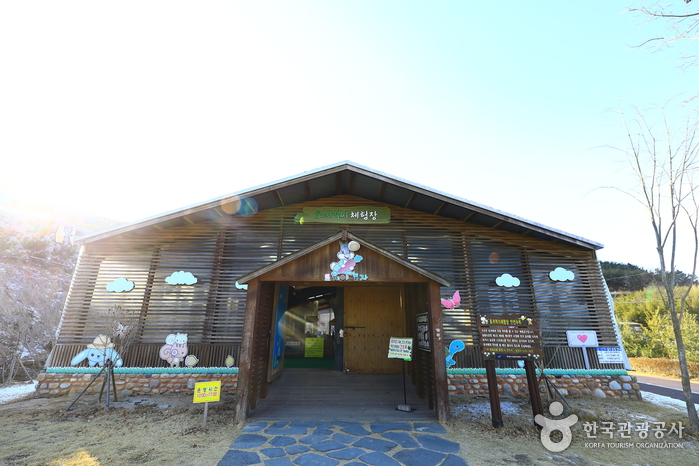
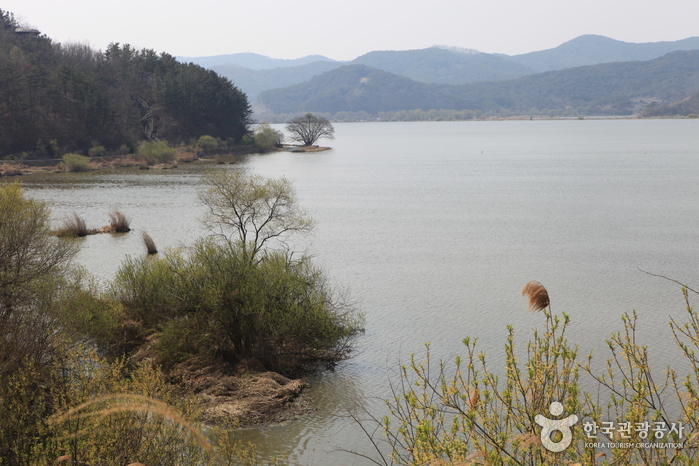
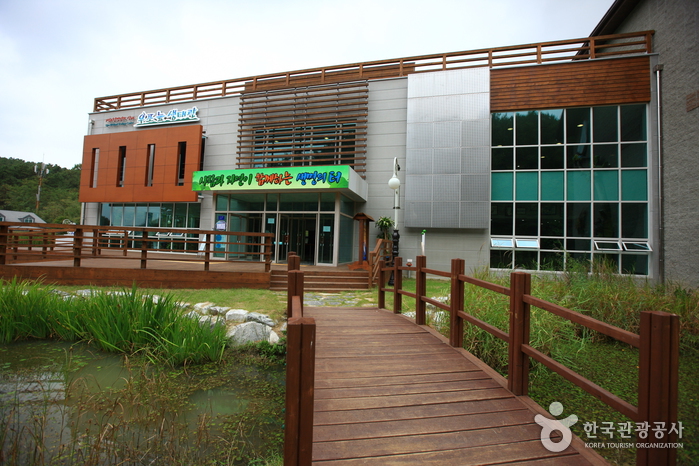
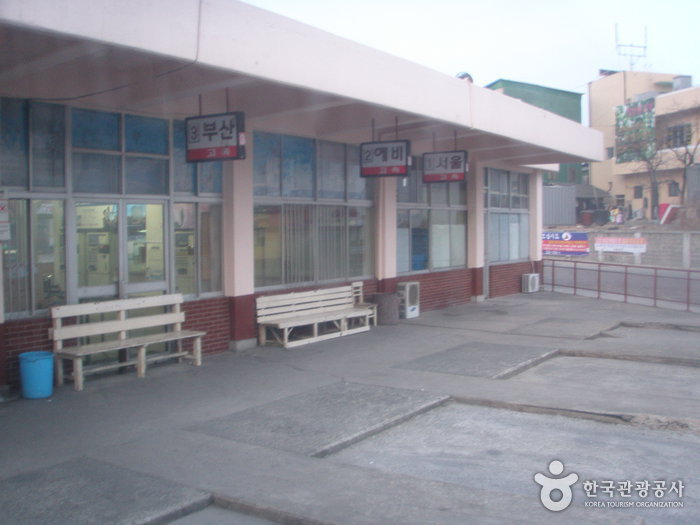

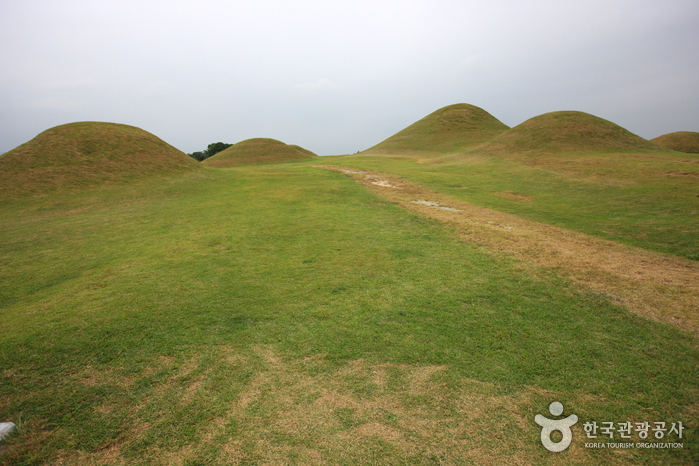
![Seokjeongdaek House [Korea Quality] / 개실마을영농조합법인 석정댁 [한국관광 품질인증]](http://tong.visitkorea.or.kr/cms/resource/24/2573424_image2_1.jpg)
![Ungidaek House [Korea Quality] / 개실마을영농조합법인(웅기댁) [한국관광 품질인증]](http://tong.visitkorea.or.kr/cms/resource/66/2573666_image2_1.jpg)
 Français
Français
 한국어
한국어 English
English 日本語
日本語 中文(简体)
中文(简体) Deutsch
Deutsch Español
Español Русский
Русский